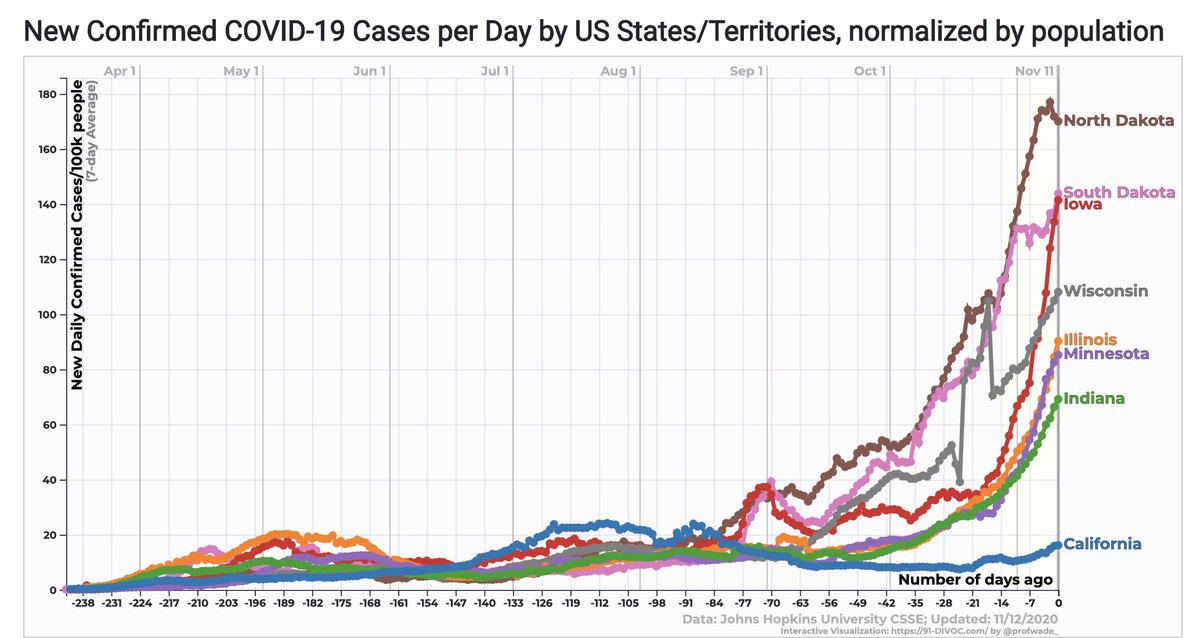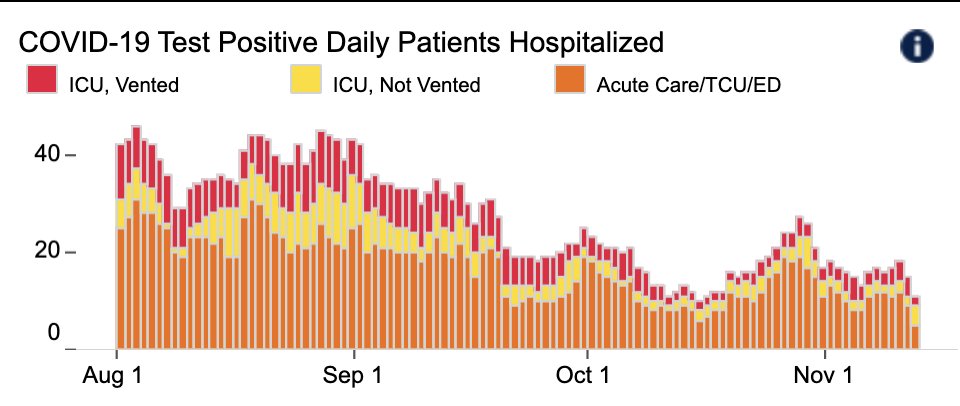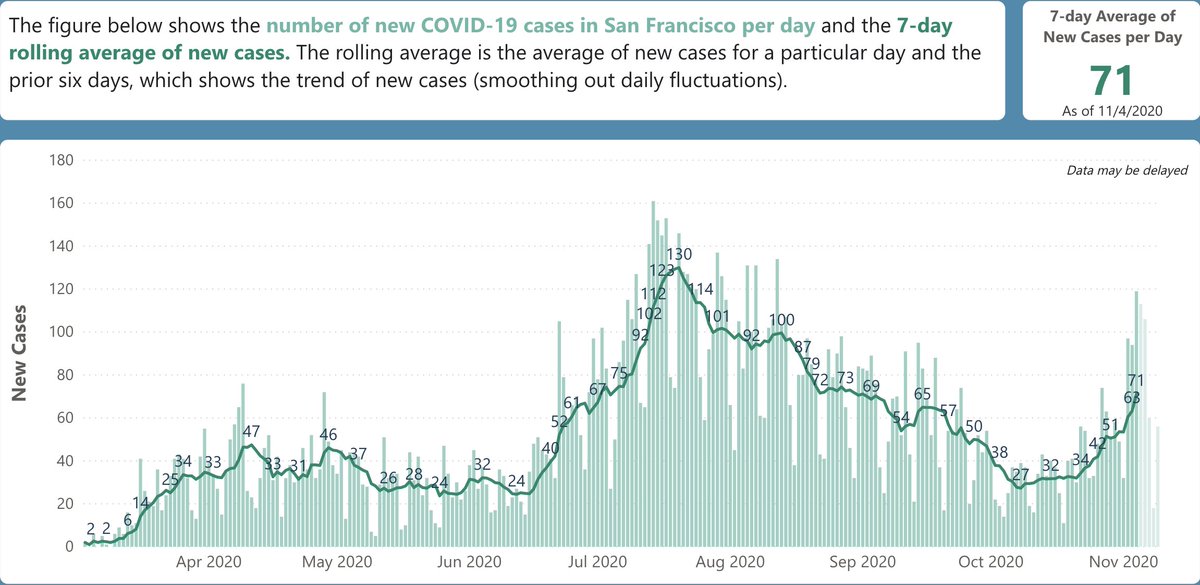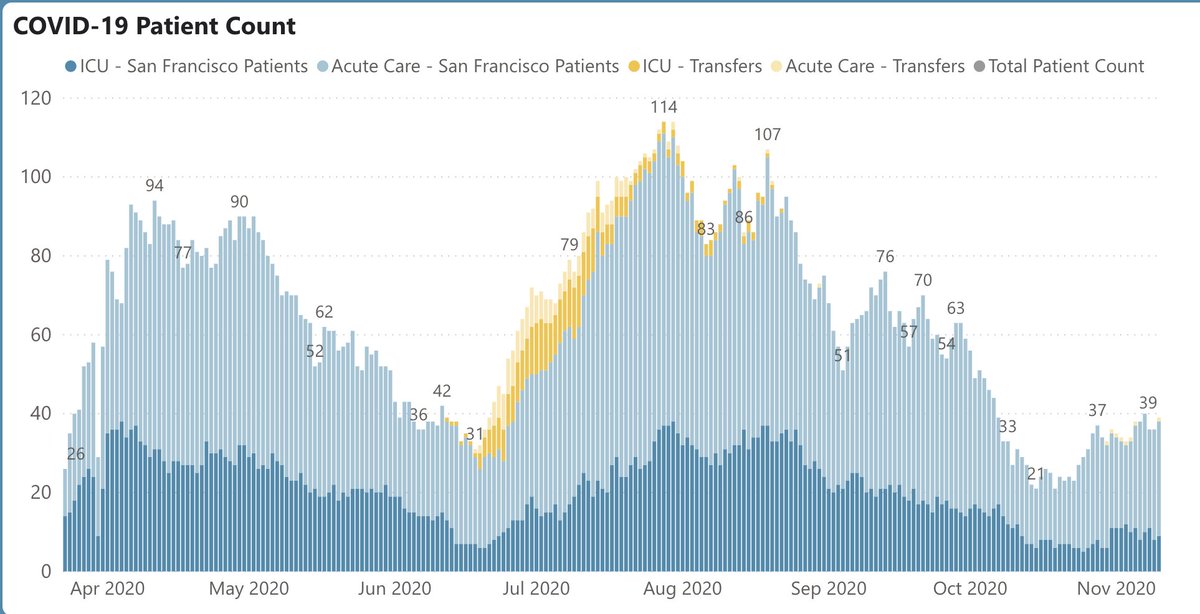
1/ Covid (@UCSF) Chronicles, Day 237
California hit its millionth case today. A milestone like that might seem an odd occasion to highlight the state as a national model for its Covid response. But I will.
Here's @nytimes piece marking millionth case tinyurl.com/y4e4zxnp
California hit its millionth case today. A milestone like that might seem an odd occasion to highlight the state as a national model for its Covid response. But I will.
Here's @nytimes piece marking millionth case tinyurl.com/y4e4zxnp
2/ I’m quoted in Times piece: “We’re so huge that this number can make it seem like we’re doing badly – & we are beginning to surge like the rest of the country – but in point of fact we are doing comparatively well.”
That, & what the U.S. can learn from CA, is today's topic.
That, & what the U.S. can learn from CA, is today's topic.
3/ While CA’s numbers are going in the wrong direction, when compared to the Midwest we’re doing OK – at least not so badly that we can’t turn this thing around. The figure shows CA's per capita case rate, plotted against several Midwestern states. 

4/ In other words, the Midwest may well have reached that moment of exponential growth when the entire region needs to resort to a complete shutdown. But in CA, we should be able to manage our surge with less extreme measures. We’ll come back to that after we review the numbers.
5/ @UCSFHospitals, we have 11 Covid patients, 4 on vents (Fig on L). Test positivity rate is 2.4%: 4.24% for patients with symptoms, and 0.5% for asymptomatic patients (Fig on R). All of these are worse than a few weeks ago, but represent non-exponential, manageable growth. 



6/ In SF, cases = 71/day, ~2x our lowest, though only half of our summer highs (Fig L). Deaths have not begun to tick up; still 153 total. Test positivity rate 1.49%, up from low of 0.8%. 39 hospitalized patients, up from low of 21 but a far cry from summer peak of 114 (Fig R). 



7/ New cases of Covid in CA are ~6K/day. That’s up from 3,500 last mth, but only 4% of today’s jawdropping U.S. total of 150,000. (Note that CA makes up 12% of U.S. population.) CA’s Covid deaths are now ~50/d, also a small fraction (3.5%) of bleak U.S. total of 1,400 deaths/day.
8/ I often look at per-capita death rates as an overall measure of how a state/region is doing. It reflects both how well its doing at preventing infections, as well as preventing pts w/ Covid from dying. CA’s death rate is 46/100K population, ~40% below the U.S. rate of 74/100K.
9/ This means that, if the U.S. had CA’s rate, we would have had 150,000 U.S. deaths from Covid, 92K fewer than the 242K actual deaths. And, as I’ve said before, if the U.S. had SF’s mortality rate (17/100K), we’d have had 56K deaths, & ~186K dead Americans would still be alive.
10/ While CA has done better than the overall nation, there has been significant regional variation. For example, LA’s Covid death rate (72/100K) is about the same as the U.S.’s average of 74/100K. And LA’s case rate (3,268/100K) is equivalent to the national rate (3,238/100K).
11/ As Joe Biden maps out a nat'l strategy for Covid, he’d do well to take some lessons from CA. Given CA’s size & diversity, Biden’s relationship with the states has some analogy to Gov. Newsom’s relationship w/ CA’s mayors & country chiefs. Because, if you think about it…,
12/ ...CA is really like a mid-sized country. CA’s population of 39M would make it the world's 37th largest country, just above Canada. And CA’s gross state product of $3.2 trillion would make it the 5th largest economy in the world, just below Germany and above the UK & France.
13/ So, just as President Biden won’t be able to enact a “national shutdown” (a sledgehammer approach suggested today by Biden task-force member @mtosterholm tinyurl.com/yy2yzhgy), CA has not enacted a one-size-fits-all response to Covid. Rather, the state has created...
14/ ... guidelines tinyurl.com/yxfwfa3t under which the counties operate. Counties are free to be more stringent than the state’s guidelines (which is what SF is doing – wisely, in my view – by closing indoor dining tomorrow tinyurl.com/yy9l3th8), but they can’t do less.
15/ CA has also taken the lead in doing things that counties can’t do for themselves, such as procuring & distributing PPE safelymakingca.org and testing covid19.ca.gov/get-tested/, as well as setting up a robust contact tracing program. tinyurl.com/y57moetj
16/ In other words, CA has taken advantage of its central authority & scale to enact a real plan: providing guidance, helping in areas in which coordination is important, & absorbing some of the political heat. It’s what a competent federal response should have been, but wasn’t.
17/ CA has avoided being overwhelmed by Covid, a major factor in its success (vs. NY in spring & Midwest now). The key has been to keep cases below level that creates vicious spirals: so many sick patients & staff that hospitals get overwhelmed & mortality rates rise; so much...
18/ …testing demand that folks can’t get tests or results take a week (rendering them worthless); so many cases that contact tracers can’t keep up. While CA has had an awful lot of cases, we’ve never hit these thresholds, which has kept the pandemic manageable & death rate down.
19/ Why has CA been generally successful? While our politics is not exactly monolithic, our leaders & people have been generally supportive of reasonable public health measures, and there’s been relatively little “give me liberty…” pushback. The hope is that the Biden team…
20/ … will create national guidelines that permit a modest amount of local flexibility, successfully promote mask-wearing (perhaps helped by the new CDC guidance tinyurl.com/y67jbypj that masks not only prevent infections in others but in the mask wearer too)...
21/ … and convince people & local politicians that, while the pressure to open up the economy is real and understandable, there can be no recovery when the virus is surging. tinyurl.com/y5jsrjoe Obviously, the politics make this brutally hard, but the Biden team has to try.
22/ Will CA continue to do OK? CA skated thru Surge 1, then things soured in June tinyurl.com/ybaoq9yf. CA’s regions varied in their ability to right the ship – Bay Area snapped back quickly, while SoCal was more badly hurt. I won’t be surprised if we see that pattern again.
23/ The vaccine news this week (90% efficacy) is terrific, and points to the possibility of a return to something approaching normal by next summer. But, while there’s a light at the end of the tunnel, we’re only half-way through the tunnel. CA has experienced plenty of tragedy…
24/ … but, notwithstanding today’s grim million-case milestone, our experience also carries some lessons for the rest of the country as we start the hard work of rolling out a national plan – unforgivably, nearly a year too late – that has a fighting chance of success. /end
• • •
Missing some Tweet in this thread? You can try to
force a refresh






